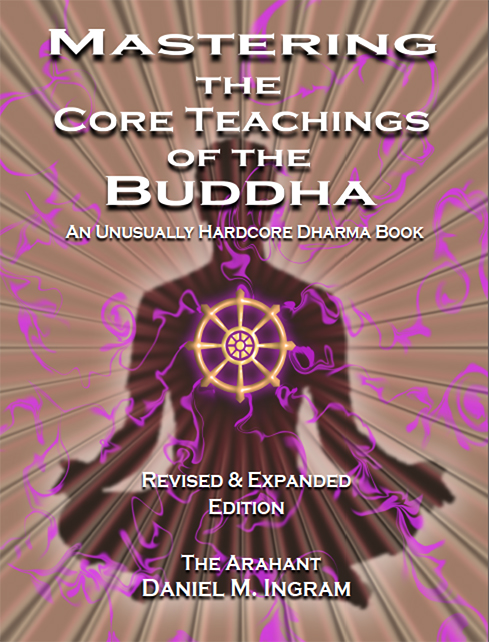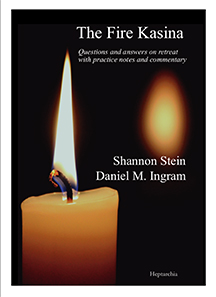The Biological Models
← The Physical Models | The Radiance Models →
Speaking of cortisol, some variants of the physical models are more in the realm of physiological function models, or systems that involve some alteration in biochemical or neurological function that results from awakening. There are lots of these models, in fact way too many to list them all. Some are being shown by science to have some merit, whereas others are preposterous. Some of the ones I consider the funniest (and the most dangerous) are:
• the belief that awakening involves people becoming “breatharians”, or people who can exist without eating or drinking and obtain all their nourishment just by breathing;
• people who upon becoming awakened suddenly lose the ability to become sexually aroused or to orgasm (beware the guru who claims this one and asks you to sit on their lap); and
• people who suddenly gain immortality and immunity from illness.
All these are ridiculous and easily dismissed.
On the other end of the spectrum, science is showing that there are real, demonstrable alterations in response and function that meditation practice can produce, and some of these are pretty cool. Blood pressure effects, cortisol level reductions, reductions in sympathetic resting tone, fMRI images and EEG findings that show alternative pathways of activation in response to external stimuli as well as internal practice: all panning out to be measureable phenomena. There will likely be many more of these as we gather more data and create more sophisticated measuring devices. There are unusual physiological alterations that can occur in very advanced practitioners, but I am going to glide past that topic, as its intricacies are not my forte or focus here.
Then there are the models that fall somewhere in-between science and fiction, and where things get slippery and most relevant for our practice. As we have seen in the emotional models section, ideals of spiritual awakening purport radical transformations in our emotional reactions to phenomena. However, many of those ideals also veer far into the realm of the biological, neuroanatomical, and physiological in their potential implications.
If awakened beings experience the physical sensations of hunger, is that desire? If awakened humans exhibit physical sexual arousal in response to various stimuli, is that lust? If awakened humans experience bursts of adrenaline in response to sudden danger that transforms muscular, cardiovascular, and brain function in the standard, predictable, mammalian ways, is that anger or hostility? If awakened humans are startled in response to a sudden jarring stimulus, is that fear? If an awakened human is sleep-deprived, circadian-rhythm-disrupted, sick, or poisoned, can they get grumpy, and is this irritation? If an awakened human is subjected to strong mind-altering substances and they exhibit what we might think of as suboptimal behavior, what does that say about their awakening? When some old monk with pudendal nerve damage (from extensive sitting), low testosterone, neuropathy from diabetes due to a rice-heavy diet with little exercise, and pudendal vascular disease finally can’t get an erection anymore, does that mean that all awakened men can’t get erections?
These are the sorts of fascinating questions where the interface between ancient ideals and modern conceptions gets interesting and often where reality testing of some of the less realistic ideals from ancient times breaks down. Said in more traditional terms, what is the difference between a kilesa or defilement and what is just the natural, unavoidable consequence of having been born human? To what degree can you transform human biology and to what degree is realization about transforming the perception of and relationship to human biology?
I would actually love it if someone with the practical, down-to-earth rigor of, say, B. F. Skinner, the well-known twentieth century behaviorist, or Alfred Kinsey, the great twentieth century biologist and sexologist, would do the study on those who claim awakening and just put them through their paces, subject them to various controlled conditions, dose them with various drugs, and measure their biological and behavioral responses, particularly comparing how their reported realization holds up both objectively and subjectively to various real-world conditions. The modern world’s range of meditation claims seriously needs to be subjected to that kind of scrutiny. That this hasn’t happened already hints that the relationship between science and meditation is still relatively infantile. When the experiments are finally done, which I assume they will be if we don’t blow up or roast the planet first, I make the following predictions:
1) The traditionalists and dogmatists will rationalize that actual awakened beings are not found today or that in our times they only exist with low levels of realization.
2) The scientists will be moderately surprised both by the humanity and the unusual responses that advanced meditators and awakened humans exhibit.
3) The meditators being studied will learn very interesting, novel things about themselves and what meditation has and hasn’t done to, in, or for them, with both overestimations and underestimations of the real-world effects of practice being corrected by better data.
4) The mainstream world will be more empowered to practice well, as ancient ideals that don’t hold up are demolished and ancient ideals that do hold up to reality testing are verified.
5) We all realize that awakened mammals are still mammals.
I am going to wax a bit personal in the biographical section that comes later and give you my summary of what awakening has and hasn’t done regarding my experience of the physiological transformation of this particular mammal, as this is what I can speak of the best. Obviously, we are now at the level of individual case study data rather than broad prospective population-based data, but it will have to do for our purposes here until we have something better. I will draw on the datapoints of some of my advanced meditator friends who have corroborated some of my observations, so we are at least to the level of an informal case series. As a scientist with an MD and an MSPH in Epidemiology, I am disappointed that this is the quality of data I have access to. Still, it is better than much of what has come before.

